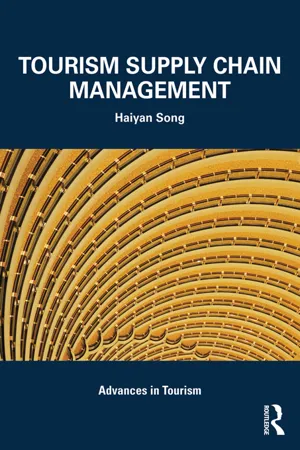
- 220 pages
- English
- ePUB (mobile friendly)
- Available on iOS & Android
Tourism Supply Chain Management
About This Book
Fierce global competition in the tourism industry is now focused on integral parts of supply chains rather than on individual firms. The highly competitive environment has forced tourism firms to look for ways to enhance their competitive advantage. Tourism products are often viewed by consumers as a value-added chain of different service components and identifying ways to effectively manage the interrelated tourism business operations will enable tourism firms to better meet customer needs and accomplish business goals thus maintaining competitive advantage over their equally efficient rivals.
This significant and timely volume is the first to apply supply chain management theories and practices in the context of tourism. By doing so the book offers insight into the relationships between tourism enterprises, how coordination across organizations can be effectively achieved and how business performance can be improved. It provides comprehensive and systematic coverage of modern supply chain management concepts and methodologies applied to the tourism and hospitality industries. The text covers key issues and principles including: marketing and product development, demand forecasting, supplier selection and management, distribution channels, capacity management, customer relationship management, tourism supply chain competition and coordination, and e-tourism.
The book combines essential theory and comparative international examples based on primary research to show challenges and opportunities of effective tourism supply chain management. This text is essential for final year undergraduate and postgraduate students studying Tourism Management, Tourism Planning and Tourism Economics.
Frequently asked questions
Table of contents
- Cover
- Half Title
- Title Page
- Copyright
- Contents
- List of Figures
- List of Tables
- Preface
- List of Abbreviations
- 1. Introduction to Tourism Supply Chain Management
- 2. Demand Management and Forecasting
- 3. Tourism Supply Chain Coordination
- 4. Tourism Supply Chain Competition
- 5. Chain versus Chain Competition
- 6. Tourism Distribution Channels
- 7. Capacity and Inventory Issues in TSCM
- 8. Customer Relationship Management in TSCs
- 9. Information Communication Technologies and TSCM
- 10. Conclusions and Future Research Directions
- References
- Index